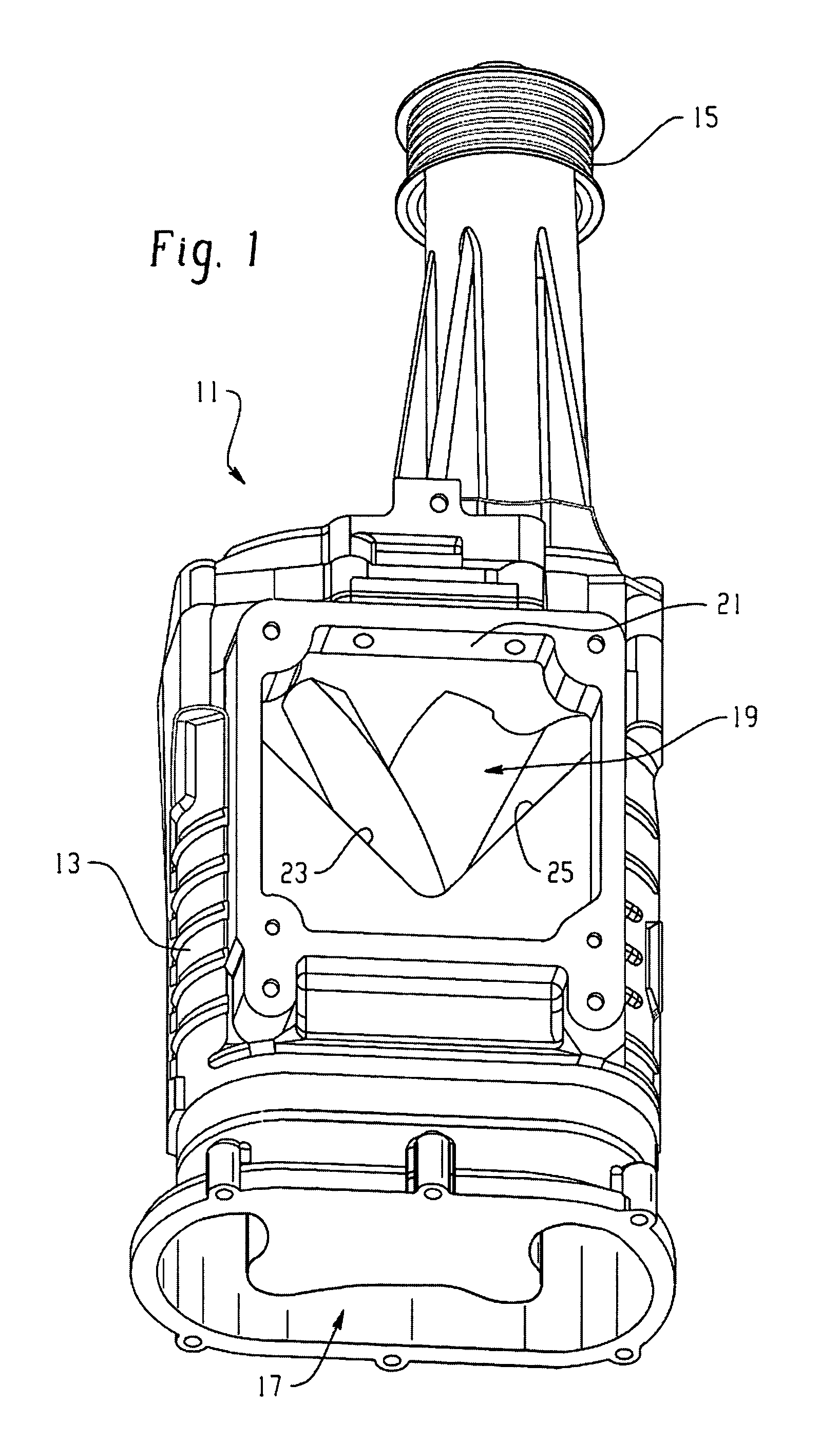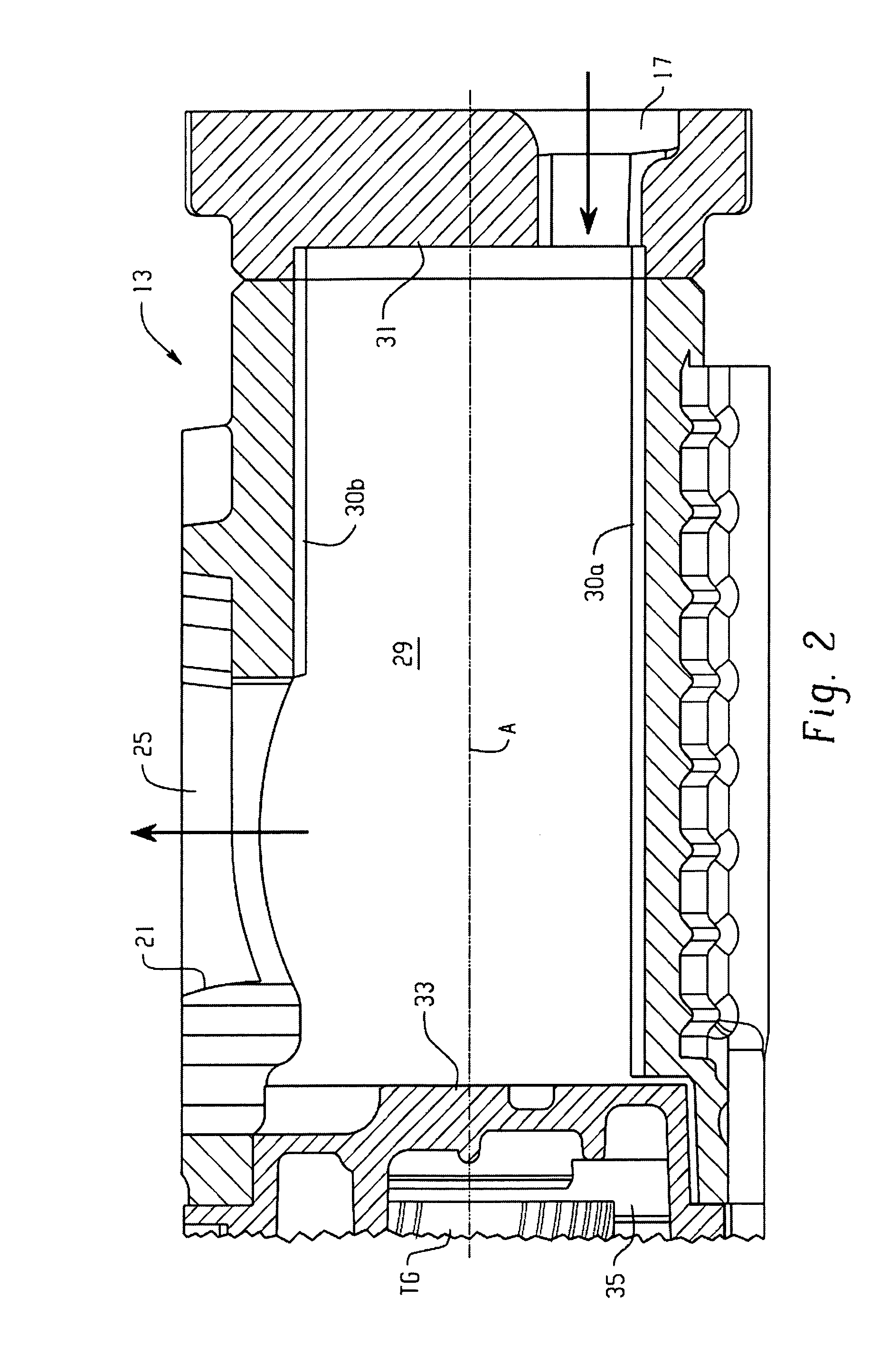Optimized helix angle rotors for Roots-style supercharger
a supercharger and rotor technology, applied in the direction of rotary or oscillating piston engines, rotary piston engines, engine lubrication, etc., can solve the problems of pulsation, noise, turbulence, etc., to improve the overall operating efficiency of the blower, improve thermal efficiency, and reduce input power
- Summary
- Abstract
- Description
- Claims
- Application Information
AI Technical Summary
Benefits of technology
Problems solved by technology
Method used
Image
Examples
Embodiment Construction
[0026]Referring now to the drawings, which are not intended to limit the invention, FIG. 1 is an external, perspective view of a Roots-type blower, generally designated 11 which includes a blower housing 13. As was described in the background of the disclosure, the blower 11 is preferably of the rear inlet, radial outlet type and therefore, the mechanical input to drive the blower rotors is by means of a pulley 15, which would be disposed toward the forward end of the engine compartment. Toward the “lower” end of the view in FIG. 1, the blower housing 13 defines an inlet port, generally designated 17.
[0027]The blower housing 13 also defines an outlet port, generally designated 19 which, as may best be seen, in FIG. 1, is generally triangular including an end surface 21 which is generally perpendicular to an axis A (see FIG. 2) of the blower 11, and a pair of side surfaces 23 and 25 which will be referenced further subsequently. It is a requirement in such a blower that the inlet por...
PUM
 Login to View More
Login to View More Abstract
Description
Claims
Application Information
 Login to View More
Login to View More - R&D
- Intellectual Property
- Life Sciences
- Materials
- Tech Scout
- Unparalleled Data Quality
- Higher Quality Content
- 60% Fewer Hallucinations
Browse by: Latest US Patents, China's latest patents, Technical Efficacy Thesaurus, Application Domain, Technology Topic, Popular Technical Reports.
© 2025 PatSnap. All rights reserved.Legal|Privacy policy|Modern Slavery Act Transparency Statement|Sitemap|About US| Contact US: help@patsnap.com



